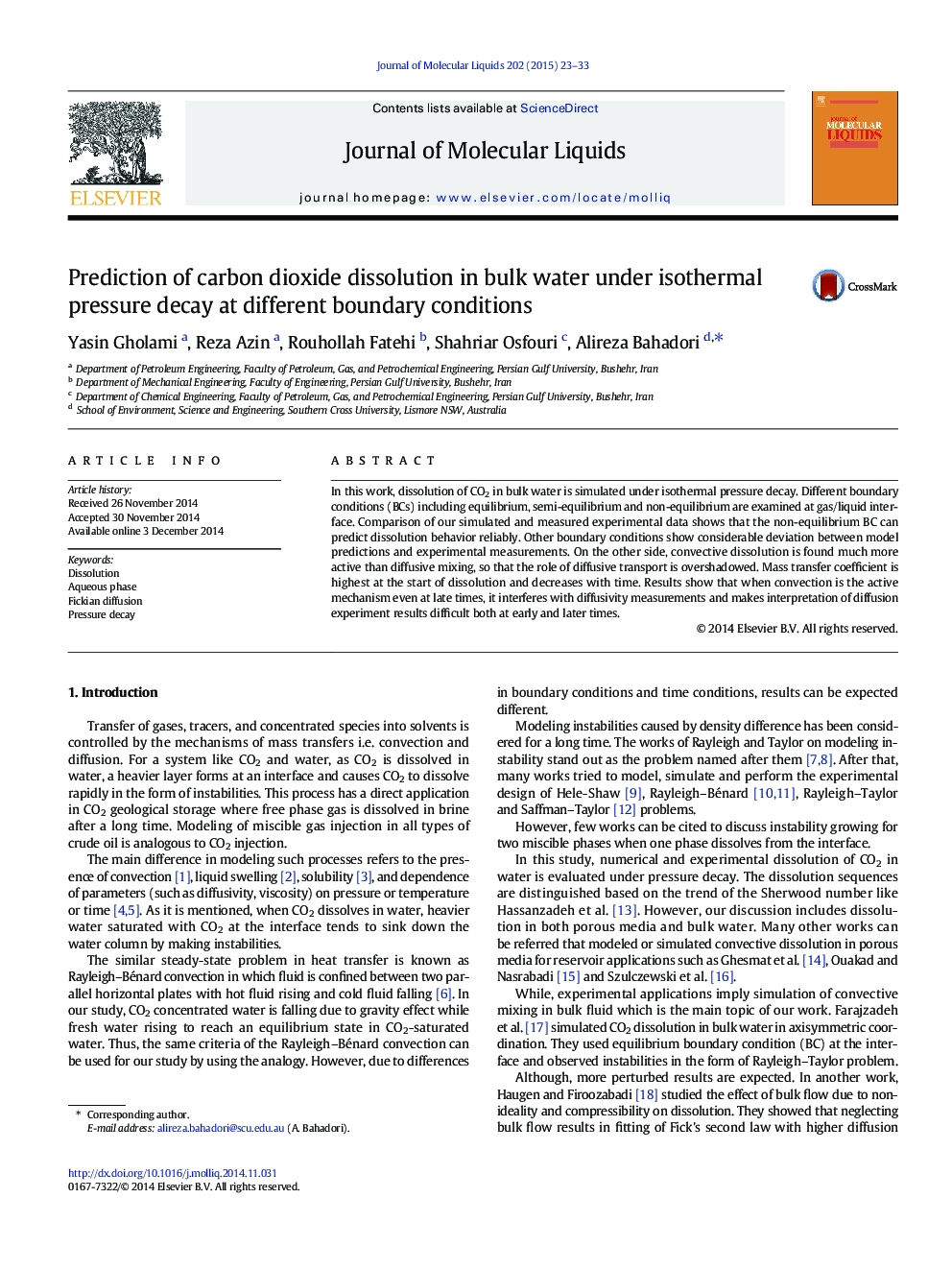| Article ID | Journal | Published Year | Pages | File Type |
|---|---|---|---|---|
| 5411015 | Journal of Molecular Liquids | 2015 | 11 Pages |
Abstract
In this work, dissolution of CO2 in bulk water is simulated under isothermal pressure decay. Different boundary conditions (BCs) including equilibrium, semi-equilibrium and non-equilibrium are examined at gas/liquid interface. Comparison of our simulated and measured experimental data shows that the non-equilibrium BC can predict dissolution behavior reliably. Other boundary conditions show considerable deviation between model predictions and experimental measurements. On the other side, convective dissolution is found much more active than diffusive mixing, so that the role of diffusive transport is overshadowed. Mass transfer coefficient is highest at the start of dissolution and decreases with time. Results show that when convection is the active mechanism even at late times, it interferes with diffusivity measurements and makes interpretation of diffusion experiment results difficult both at early and later times.
Related Topics
Physical Sciences and Engineering
Chemistry
Physical and Theoretical Chemistry
Authors
Yasin Gholami, Reza Azin, Rouhollah Fatehi, Shahriar Osfouri, Alireza Bahadori,
